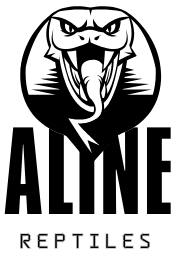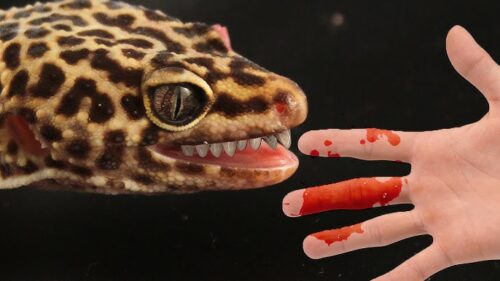Imagine you’re observing your leopard gecko—its vibrant colors, its slow, curious movements, and that cheeky personality that’s become a daily delight. But one thought lingers: Do leopard geckos have teeth? It’s a simple question, but one that many first-time gecko owners ask when learning about these fascinating creatures.
If you’ve ever wondered whether your gecko’s mouth is a toothless wonder or if its teeth are there for more than just show, you’re in the right place.
In this article, we’ll unravel the mystery of leopard gecko teeth, why they’re important, and how to care for them. Whether you’re a new gecko parent or a seasoned reptile enthusiast, understanding their dental health is essential to ensuring they live a long, happy life.
Overview of Leopard Geckos

Before diving into the details of their teeth, let’s first get to know the leopard gecko itself. These fascinating reptiles are native to the dry, rocky areas of Afghanistan, Pakistan, and parts of India. Known for their distinctive spotted skin and docile nature, leopard geckos are one of the most popular pet reptiles in the world.
Leopard geckos are insectivores, which means their diet primarily consists of insects like crickets, mealworms, and other small arthropods. They are ground dwellers, which is why they have a relatively flat body and short legs, perfect for their lifestyle in the wild.
These geckos can live up to 20 years with proper care and can grow anywhere from 7 to 10 inches in length. Their relatively low-maintenance care routine makes them an ideal pet for beginners, but when it comes to their diet, health, and overall care, knowing all the details—like whether they have teeth—is crucial for providing the best care.
Do Leopard Geckos Have Teeth?
The short answer is yes, leopard geckos do have teeth! However, their teeth are quite different from those of mammals. Leopard geckos possess small, sharp teeth suited to their insect-eating diet.
These teeth are not as visible or pronounced as those of mammals, and they don’t have the sharpness or variety of teeth that a carnivore, like a dog or a cat, would have. Instead, they are specialized for gripping, holding, and tearing food, rather than chewing it.
Types of Teeth in Leopard Geckos:
- Incisors: The teeth at the front of their mouths are smaller and sharper, used for gripping and tearing the flesh of their prey.
- Molars: The teeth at the back of the mouth are designed to crush food before it’s swallowed. While leopard geckos don’t chew their food as mammals do, their back teeth play a role in breaking down their meal into smaller, more manageable pieces.
Leopard gecko teeth are not designed for chewing in the same way that human teeth are. Instead, they are adapted to grab and tear food rather than grind it. This makes sense because leopard geckos consume insects, which are often swallowed whole after being bitten.
Teeth Structure and Function
The structure of leopard gecko teeth is uniquely adapted for their insectivorous diet.
Teeth Size and Shape: Leopard geckos’ teeth are tiny, but they are surprisingly efficient. Their incisors are sharp and pointy, ideal for grabbing hold of small, wriggling insects. The back molars are relatively flat but strong enough to break down the exoskeletons of insects, which is an important part of their diet.
Function of Teeth in Leopard Geckos: Leopard geckos are primarily insectivores, which means their diet consists mainly of small insects like crickets, mealworms, and even small spiders. To catch and eat their prey, leopard geckos use their teeth in a few specific ways:
- Grabbing: The sharp front teeth help them capture insects that they may stalk and catch with a quick lunge.
- Tearing: Once the prey is captured, the gecko uses its sharp incisors to rip through the insect’s body, breaking it down into smaller parts.
- Crushing: While leopard geckos do not chew, their molars are used to crush the hard exoskeletons of insects before swallowing.
Their teeth, although small, are crucial for their ability to capture and consume their food. Without their teeth, they wouldn’t be able to survive in the wild, where every meal depends on capturing live prey.
Do Leopard Geckos Lose Their Teeth?
Yes, leopard geckos do lose their teeth, but the good news is that they can regenerate them. Just like many reptiles, their teeth are not permanent fixtures. Over time, leopard geckos shed their teeth, especially if one breaks or becomes worn down. This is a natural process, and unlike mammals, geckos don’t suffer from permanent tooth loss.
In fact, they replace their teeth throughout their lives. This regeneration process ensures that they always have a fresh set of teeth ready for capturing and tearing prey. The teeth fall out naturally and are replaced by new ones within a few weeks.
How often do leopard geckos lose their teeth? While it’s hard to pinpoint an exact timeline, it’s generally believed that a leopard gecko can lose and regenerate teeth several times throughout its life. In healthy geckos, this process happens without issue, ensuring their dental health remains intact.
Leopard Gecko Teeth and Health
Just like any other pet, the health of a leopard gecko’s teeth is a reflection of its overall well-being. A gecko with healthy teeth is likely receiving the right nutrition and living in an environment that supports its natural behaviors.
Signs of Healthy Teeth:
- Your gecko will actively eat and hunt for food, indicating that its teeth are in good shape.
- There should be no visible damage, such as broken or missing teeth, and no signs of infection.
- Healthy teeth should not cause any discomfort for your gecko, and it will show no signs of drooling or difficulty eating.
Common Teeth Issues:
- Broken or Chipped Teeth: This can happen if the gecko bites down too hard on something rough, like a hard insect shell. It can also occur if there is a deficiency in calcium or if the gecko is malnourished.
- Dental Infection: Just like in mammals, a gecko can develop infections in its gums or teeth, especially if there’s a buildup of bacteria.
- Abscesses: Swelling or unusual growths near the mouth can indicate a dental abscess.
Proper Care for Leopard Gecko Teeth

Caring for your leopard gecko’s teeth is straightforward once you understand the essentials. Proper diet and environmental management are key to keeping their teeth and overall health in top shape.
Diet Considerations: Leopard geckos need a diet that’s rich in nutrients to support not only their overall health but also their dental health. Providing insects like crickets, mealworms, and superworms will give your gecko the necessary protein and nutrients.
- Calcium: A healthy calcium intake is essential for strong bones and teeth. Make sure to sprinkle calcium powder on your gecko’s food regularly to support their dental and bone health.
- Vitamin D3: Vitamin D3 is critical for calcium absorption. Without it, your gecko may develop metabolic bone disease, which can affect its teeth and bones.
General Oral Hygiene: Though leopard geckos don’t require brushing, maintaining a clean environment is crucial for their dental health. Ensure their tank is clean, and replace any uneaten food promptly to avoid bacteria buildup. You can also provide a shallow water dish to help with hydration, as dehydration can sometimes contribute to dental issues.
What To Do if You Notice Teeth Problems in Your Leopard Gecko?
If you notice signs of dental issues—such as reluctance to eat, visible swelling near the mouth, or difficulty capturing prey—it’s important to act fast.
Signs of Dental Problems:
- Refusal to Eat: If your gecko suddenly stops eating, it could be a sign of dental discomfort or an underlying health issue.
- Drooling or Excessive Salivation: This can indicate an infection, injury, or other mouth-related problems.
- Swelling or Redness: Swelling around the mouth or jawline may be a sign of infection or abscesses.
If you notice any of these signs, it’s best to consult a reptile veterinarian who can diagnose and treat the problem. Don’t wait for it to get worse, as dental issues can lead to further complications.
Frequently Asked Questions (FAQ)
Do Leopard Geckos Bite? While leopard geckos aren’t aggressive, they can bite if threatened or startled. Their bites are not typically harmful to humans but can be sharp enough to cause minor pain or discomfort.
Can Leopard Geckos Get Cavities? Unlike humans, leopard geckos don’t suffer from cavities, but they can still have dental issues like infections or abscesses if not properly cared for.
How Long Do Leopard Gecko Teeth Last? Leopard gecko teeth are naturally shed and replaced over time. The exact lifespan of a tooth can vary, but they regenerate regularly throughout the gecko’s life.
Conclusion
So, do leopard geckos have teeth? Absolutely! These small, sharp teeth are an essential part of their biology, allowing them to catch and tear through their insect prey. With proper care, including a balanced diet and regular attention to their overall health, leopard geckos can live long, healthy lives with strong teeth to help them thrive.
By understanding the role of their teeth and how to care for them, you can ensure that your leopard gecko remains happy and healthy. Whether you’re a first-time gecko owner or an experienced reptile enthusiast, keeping these unique creatures in top shape is the key to a long-lasting bond.

